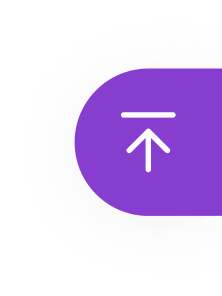Speaking as both a math teacher who has taught in a flipped and purely online teaching model over the past 10+ years and as the director of innovation & educational technology at my school, Kami has been a vital tool for me. Kami has provided a way for me to provide real-time feedback to students and for my learners to do collaborative work — whether we are together in the classroom or not.
A question that has driven my work is: how can we, as educators, embrace technology to ensure all voices in the classroom are heard? I believe that when we use the right technology and meaningfully integrate these tools into our lesson design, we can create safe learning environments for all students to be able to express themselves and for us to get to know our learners, and their needs, on a more personal level.
Kami as a feedback tool
When I started using Kami, its main purpose was to give students feedback on their problem sets. Students would scan their handwritten work and submit it to Google Drive or insert images of their work directly into a Kami. Then, I could mark up their work in Kami. Particularly in teaching an online class, having the ability to add voice and video directly on student work is incredibly helpful — not only in that it helps with the clarity of my explanations but also because I am able to add tone and emotion. That can make all the difference when we are not able to deliver feedback live.
Because Kami is a live document, students can ask clarifying questions directly on the feedback that I’ve provided through Text and Voice Comments. I get an email notification each time a student leaves a comment, so this workflow keeps our communication organized and all on the one Kami document — no separate communication platform required!
Kami for collaborative problem-solving in the classroom
In the classroom, Kami has been a great tool for me to be able to address needs during group work. Assuming students are working on paper and don’t have access to a digital tablet with a pen, they can simply take a snapshot of their handwritten work to contribute to a shared Kami document.
The setup might look like this. Say the class is working on 5 problems. I would share a collaborative Kami document with 5 pages — one page for each of the 5 questions. As students complete each problem, or even if they get stuck somewhere along the way, they upload their picture to the collaborative document. That way, I can see what they have tried and move around the classroom according to what groups need. And, when we are ready to discuss answers as a full class, I can shine the spotlight on student work that has been submitted. Personally, I have a Wacom tablet so that I can ink up their work using the pen tools in Kami. It is helpful to be able to annotate as we are talking through a solution so that students can most easily follow the work on the board. In this way, we can also make corrections together as a class, directly on the student work that was submitted.
How to set things up:
- Create a collaborative Kami document with a page for each problem that students are working on as a class
- When a student or group gets stuck, they add a snapshot of their work to the Kami document
- Check-in individually with the student/group OR use the question to spark a group conversation
- Use the pen tools with a digital pen to annotate directly on the Kami Document.
By leveraging technology in this way, we are able to provide every student in the room a chance to share. Some will thrive in their handwritten response. Others will find that their best work comes through the moment when we bring the conversation to the board to talk out the various answers. The thing is: I have now provided an outlet for all students to contribute their ideas. We can celebrate multiple approaches and ideas.
The power of Voice Comments
Speaking of student’s voices, the Voice Comment tool in Kami can be so powerful. One of my favorite, simple use-cases was done by a colleague of mine who teaches Middle School Spanish. She is using Kami for students to do read-aloud and dictation practice. Students use audio comments to practice reading the assigned worksheet. This really helps students practice their speaking and pronunciation, particularly because they have the chance to listen to their own voice back. And, because Kami is collaborative, the teacher can leave both text and voice feedback. Students can playback the voice replies as many times as they need as they work to refine their speaking skills.
Let me close with some tutorials that I have compiled to share with my students and colleagues. Please feel free to use anything that you find useful!
“If we empower students with the resources they need and coach them through the process of using these tools, then students can take ownership for their learning. And that’s where the magic happens.” – Stacey Roshan




